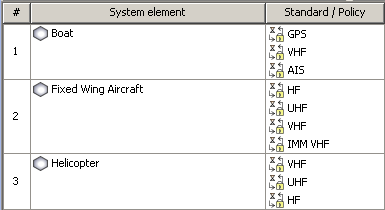Description
The StdV-1 defines the technical, operational, and business standards, guidance, and policy applicable to the architecture being described. As well as identifying applicable technical standards, the DoDAF V2.0 StdV-1 also documents the policies and standards that apply to the operational or business context. The DISR is an architecture resource for technical standards that can be used in the generation of the StdV-1 and StdV-2 Standards Forecast.
In most cases, building a Standards Profile consists of identifying and listing the applicable portions of existing and emerging documentation. A StdV-1 should identify both existing guidelines, as well as any areas lacking guidance. As with other models, each profile is assigned a specific timescale (e.g., “As-Is”, “To-Be”, or transitional). Linking the profile to a defined timescale enables the profile to consider both emerging technologies and any current technical standards that are expected to be updated or become obsolete. If more than one emerging standard time-period is applicable to an architecture, then a StdV-2 Standards Forecast should be completed as well as a StdV-1.
The intended usage of the StdV-1 includes:
- Application of standards (informing project strategy).
- Standards compliance.
Implementation
StdV-1 can be represented by a StdV-1 table.

The Standards cited are referenced as relationships to the systems, services, system functions, service functions, system data, service data, hardware/software items or communication protocols, where applicable, in SV-1 Systems Interface Description, SV-2 Systems Resource Flow Description, SV-4 Systems Functionality Description, SV-6 Systems Resource Flow Matrix, SvcV-1 Services Context Description, SvcV-2 Services Resource Flow Description, SvcV-4 Services Functionality Description, SvcV-6 Services Resource Flow Matrix, DIV-2 Logical Data Model, and DIV-3 Physical Data Model.
- Functional Standard
- Technical Standard
- Protocol